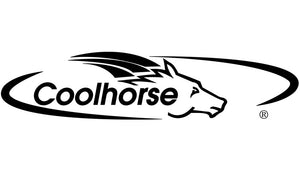Horses are often prone to leg injuries because they have little to no muscle tissue on their lower leg to protect bones, tendons, and ligaments. Fatigued or young horses can be more disposed to injury from striking themselves with their own hooves while unbalanced. Performance horses rely on leg gear protection to protect against impacts and support the soft tissue in their legs. Horse wraps and boots are the most common leg gear protection for horses.
Boots
Boots offer leg protection, particularly when the horse strikes itself. Some of the most common kinds are bell boots, splint boots, sports medicine boots, and skid boots.
Bell boots encircle the pastern with a bell-shaped cover, hence the name. These boots cover the entire hoof and can guard the front or back legs to protect horses in their stalls or while exercising. Bell boots’ main function is preventing horses from hitting themselves, especially on uneasy terrain.
Splint boots are commonly used to protect the front legs during vigorous work, like jumping and lunging. Unlike bell boots, which encircle the pastern, splint boots sit at or above the joint to protect the soft tissue and lower bones.
Sports medicine boots are designed to protect and support the horse's lower leg up to just below the knee. While sports medicine boots are not as padded as splint boots, they do provide more support to the tendons and ligaments. Sports medicine boots can be made to retain heat for increased blood flow, as these boots are typically worn on performance horses.
Skid boots are designed for the hind legs and protect the hind fetlocks and pasterns from skidding on the riding surface. Most commonly seen on reiners and cutting horses, these boots are made of a cushioning material that mitigates contact between the fetlocks or pasterns when a horse quickly stops or turns.
Wraps
Leg wraps are an essential form of protection for horses. The most common uses for leg wraps are to prevent swelling after hard work and to treat an injury. For example, a leg wrap would be used when a horse has cut its leg to prevent dangerous swelling, bleeding, and to keep debris and dirt out of the wound while it heals.
Wraps and boots are a necessity to keep horses’ legs safe from the injuries they are often prone to. Understanding the types of leg gear protection for horses is only half the battle, however. Make sure the boot or wrap fits well, is kept clean, and is always applied properly to keep your horse fully protected.
